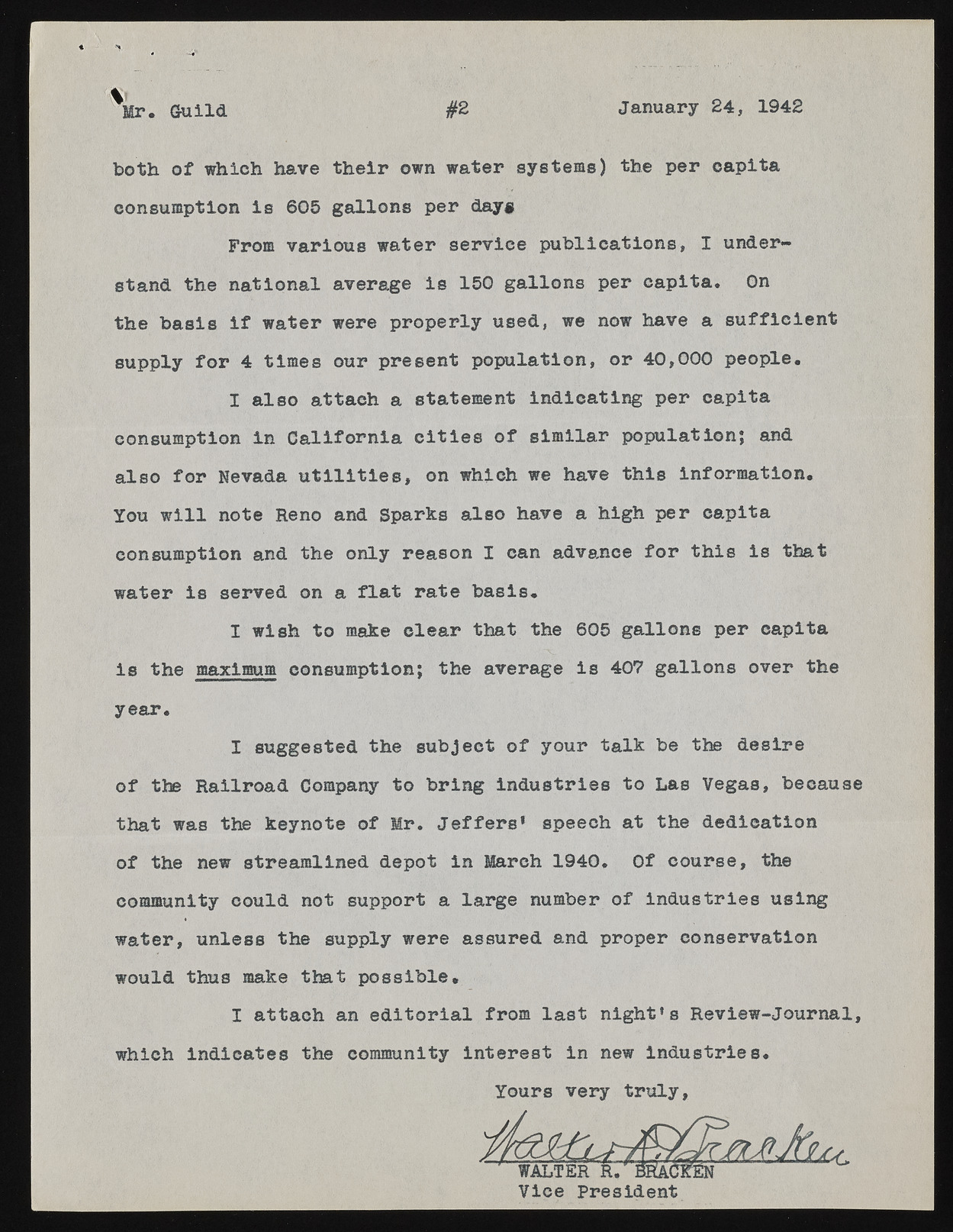Copyright & Fair-use Agreement
UNLV Special Collections provides copies of materials to facilitate private study, scholarship, or research. Material not in the public domain may be used according to fair use of copyrighted materials as defined by copyright law. Please cite us.
Please note that UNLV may not own the copyright to these materials and cannot provide permission to publish or distribute materials when UNLV is not the copyright holder. The user is solely responsible for determining the copyright status of materials and obtaining permission to use material from the copyright holder and for determining whether any permissions relating to any other rights are necessary for the intended use, and for obtaining all required permissions beyond that allowed by fair use.
Read more about our reproduction and use policy.
I agree.Information
Digital ID
Permalink
Details
More Info
Rights
Digital Provenance
Publisher
Transcription
Mr. Guild # 2 January 24, 1942 both of which have their own water systems) the per capita consumption is 605 gallons per day# From various water service publications, I understand the national average is 150 gallons per capita. On the basis if water were properly used, we now have a sufficient supply for 4 times our present population, or 40,000 people. I also attach a statement indicating per capita consumption in California cities of similar population; and also for Nevada utilities, on which we have this Information. You will note Reno and Sparks also have a high per capita consumption and the only reason I can advance for this is that water is served on a flat rate basis. I wish to make clear that the 605 gallons per capita is the maximum consumption; the average is 407 gallons over the year. I suggested the subject of your talk be the desire of the Railroad Company to bring industries to Las Vegas, because that was the keynote of Mr. Jeffers* speech at the dedication of the new streamlined depot in larch 1940. Of course, the community could not support a large number of industries using water, unless the supply were assured and proper conservation would thus make that possible. I attach an editorial from last night’s Review-Journal, which indicates the community interest in new industries. Yours very truly, Vice President

